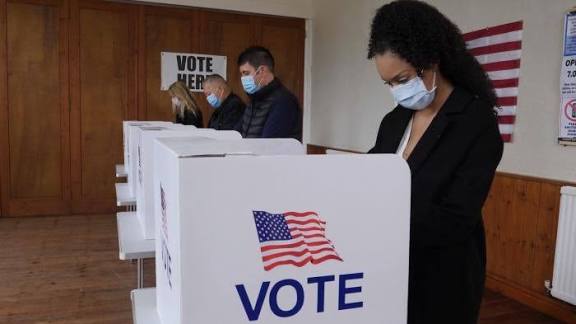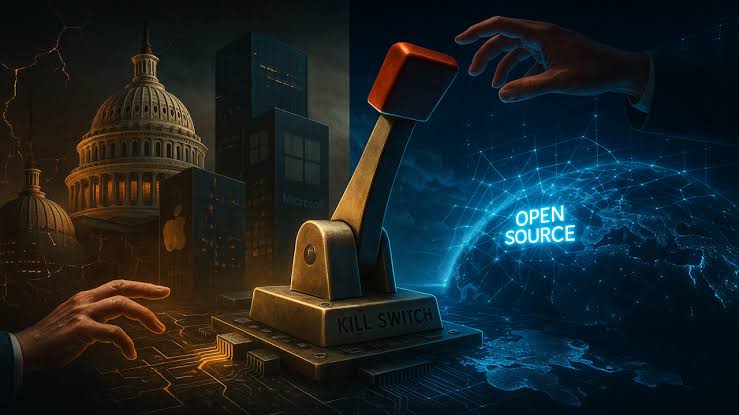Viral: Democracy in Danger Speech Sparks Firestorm

The recent “democracy in danger” firestorm in India mainly revolves around an open letter by 272 eminent citizens condemning it. Today we will discuss about Viral: Democracy in Danger Speech Sparks Firestorm
Viral: Democracy in Danger Speech Sparks Firestorm
In an era marked by polarization, political upheaval, and declining trust in institutions, a recent “Democracy in Danger” speech has gone viral and triggered an intense national and international firestorm. The speech, delivered by a prominent political figure, warned that democratic norms are eroding from within and that society is approaching a dangerous tipping point. What began as a forceful call to action has since become a global conversation about authoritarian drift, institutional fragility, and the future of democratic governance.
This article examines the origins of the speech, the themes that fueled its virality, the backlash it sparked, and the broader implications for democracy in the modern world.
The Speech That Ignited the Controversy

The speech that set off the firestorm began as a stark warning: democracy is not being threatened by foreign adversaries alone, but from internal decay. The speaker argued that democratic norms are being eroded through political manipulation, censorship, institutional weakening, and the suppression of dissent.
A central line from the address—“If democracy falls, it will be because we abandoned the principles that once protected it”—quickly became a viral quote circulating across social media, news coverage, and public commentary.
The message was emotionally charged, intensely symbolic, and layered with historical references to past moments of democratic crisis. While some praised it as brave and timely, others viewed it as dramatized alarmism crafted for political effect.
Global Context: Why the Speech Resonated
A Worldwide Democratic Anxiety
The speech captured attention not merely because of its delivery, but because it connected to a rapidly growing global anxiety surrounding democratic backsliding.
Across the world, democratic institutions face unprecedented pressure:
In the United States, debates surrounding political violence, voting rights, judicial independence, and media influence have intensified.
In Europe, disputes over censorship, populism, and political fragmentation have raised concerns about weakening democratic norms.
At the United Nations, global leaders have repeatedly warned about disinformation, division, and shrinking civic space.
In South Asia, opposition leaders and civil society groups regularly voice concerns about free speech restrictions, political pressure, and erosion of constitutional checks and balances.
The viral speech tapped directly into these anxieties, framing the moment as part of a global pattern of institutional weakening and democratic stress.
Domestic Flashpoints
In recent years, several national events have escalated concerns:
Charges that political opponents are weaponizing institutions.
Growing polarization between ruling parties and opposition.
Accusations of censorship, propaganda, and shrinking media freedom.
Public protests over corruption, electoral reform, and human rights.
Against this backdrop, the “Democracy in Danger” speech felt particularly potent, delivering a message that many already sensed but had not heard articulated so forcefully.
Why the Speech Went Viral
The speech exploded across the internet and news cycles for several key reasons:
1. The Timing
The message landed during a politically tense moment—one marked by election cycles, policy battles, and international uncertainty. Citizens were already primed for discussions about institutional decline.
2. Emotional and Dramatic Rhetoric
The speaker’s use of urgent, at times apocalyptic language sharpened the speech’s impact. Lines about “losing the soul of the nation” or “standing on the edge of democratic collapse” fueled rapid sharing and intense debate.
3. High-Profile Delivery
Given the speaker’s political stature, the address carried immense weight. Every statement was immediately dissected by media outlets, analysts, and political opponents.
4. Polarized Reaction
No viral moment is complete without disagreement. Supporters hailed the speech as courageous. Critics denounced it as manipulative. The clash between both sides amplified its visibility.
5. Relevance Across Borders
Although the speech targeted national issues, its themes—censorship, populism, corruption, elite capture—are globally relatable. This helped it transcend domestic boundaries and attract global attention.
Major Themes in the Speech
The core ideas presented in the speech revolved around several recurring themes:
1. Internal Threats Over External Threats
The speaker argued that while foreign adversaries remain a concern, the greatest danger to democracy comes from within—through institutional degradation, unchecked executive power, and public apathy.
2. Free Speech Under Siege
A substantial part of the address warned that dissenting voices—whether activists, journalists, or political minorities—are being marginalized or silenced.
3. Rise of Elite Control
The speech highlighted the consolidation of power among political and economic elites, claiming that a form of oligarchy is emerging in which wealthy players heavily influence policy and public opinion.
4. Disinformation and Technology
The speaker drew attention to the growing role of misinformation, social media manipulation, and artificial intelligence in shaping public perceptions and undermining trust in democratic institutions.
5. Citizen Disillusionment
Another central concern was voter apathy. The speaker warned that democracy cannot survive if citizens lose faith in the electoral process, believing that institutions no longer represent them.
6. Urgent Call to Action
The speech ended with a message urging citizens to remain engaged, protect democratic norms, hold leaders accountable, and reject authoritarian tendencies.
The Firestorm: Political and Public Reaction
The response to the speech was immediate and intense, creating a societal fault line almost overnight.
Political Leaders
Opponents accused the speaker of:
Political fearmongering
Exaggerating threats to rally their base
Using the language of crisis for electoral advantage
Undermining trust in institutions through hyperbole
Allies, however, praised the speech as a bold defense of democratic values and a necessary wake-up call.
Civil Society
Activists and non-governmental organizations had mixed reactions. Some applauded the attention to democratic erosion and suppression of dissent. Others criticized the speech for lacking solutions or for contributing to polarization.
Media Coverage
Media outlets covered the speech relentlessly. Some analyzed it line-by-line, others framed it as a defining political moment. Depending on ideological leaning, commentary ranged from “heroic warning” to “political theater.”
Public Opinion
On social media, hashtags related to the speech trended for days. Memes, debates, and reaction videos poured in. Polls suggested that the speech succeeded in energizing some voters while alienating others.
Implications for Democracy
The viral speech and its fallout have several significant implications:
1. Potential Erosion of Trust
While the speech aimed to raise awareness, constant warnings about institutional collapse may further diminish public trust and increase cynicism toward democratic processes.
2. Heightened Polarization
The speech deepened the ideological divide. Supporters felt validated; critics felt attacked. In democracies already strained by division, such speeches can widen the gap.
3. Domestic and Global Policy Impact
Statements about democratic fragility can influence foreign policy, international alliances, and legislative agendas. Nations may adjust their relationships based on perceived ideological alignment.
4. Mobilization of Civil Society
On the positive side, the speech reignited activism—pro-democracy marches, petition campaigns, and renewed focus on voting rights and transparency.
5. Pressure for Institutional Reforms
Calls for electoral reform, anti-corruption measures, and stronger checks on executive power have gained momentum following the speech.
6. Growing Focus on Technology Threats
The speech accelerated conversations about how AI, deepfakes, and coordinated misinformation campaigns could destabilize elections and public trust.
Criticisms and Counterarguments
The speech faced numerous critiques:
1. Alarmism
Some analysts argued that framing the moment as a near-democratic collapse was exaggerated and could create unnecessary panic.
2. Partisan Intent
Critics claimed the speaker used the language of democracy to undermine political opponents, painting themselves as the sole defender of democratic ideals.
3. Oversimplification
The idea that democracy is in immediate danger, critics argued, overlooks structural resilience and robust civic institutions that continue to function.
4. Risk of Empowering Authoritarian Tendencies
Ironically, efforts to “protect democracy” can sometimes inspire heavy-handed regulations, surveillance, or censorship—actions that weaken democracy rather than strengthen it.
5. Undermining National Stability
By framing the current moment as an existential crisis, the speech might inadvertently fuel unrest or undermine unity.
Historical and Global Parallels
The concerns raised in the speech echo previous moments in history:
Democratic crises during the industrial revolution
The rise of fascism in the early 20th century
Warnings of democratic erosion during the Cold War
Post–Cold War instability in emerging democracies
Modern parallels include:
The rise of populist movements
Increased use of state surveillance
Concentration of power in executive leadership
Declines in press freedom
Technological disruption altering civic discourse
The viral speech fits within this long pattern of leaders warning that democracy’s survival requires vigilance.
What Can Be Done? A Path Forward
Regardless of political alignment, the speech underscores a fundamental truth: democracy requires maintenance. Here are steps that can strengthen democratic systems:
1. Invest in Civic Education
Educated citizens are less vulnerable to manipulation, misinformation, and political extremism.
2. Protect Free Speech
Safeguarding journalists, activists, and dissenting voices is essential for a functioning democracy.
3. Strengthen Electoral Processes
Reforms that ensure fair voting, transparency, and public trust are essential.
4. Regulate Social Media Responsibly
Balanced, transparent oversight—not censorship—can help reduce misinformation without harming free speech.
5. Reinforce Checks and Balances
Independent judiciaries, oversight bodies, and ethical standards must be protected.
6. Encourage Healthy Political Dialogue
Democracy flourishes when debate is respectful, informed, and inclusive.
Conclusion
The viral “Democracy in Danger” speech has become more than a political moment—it has sparked a global reckoning about the fragility and resilience of democracies in the modern era. Whether viewed as a necessary warning or a partisan maneuver, the speech has undeniably reignited debates about power, freedom, and the future of governance.
Democracy is not self-sustaining. It relies on the vigilance and participation of its citizens. If the speech accomplishes one lasting impact, it is this: it has reminded millions that democracy survives only when people care enough to defend it.
How useful was this post?
Click on a star to rate it!
Average rating 0 / 5. Vote count: 0
No votes so far! Be the first to rate this post.
About the Author
usa5911.com
Administrator
Hi, I’m Gurdeep Singh, a professional content writer from India with over 3 years of experience in the field. I specialize in covering U.S. politics, delivering timely and engaging content tailored specifically for an American audience. Along with my dedicated team, we track and report on all the latest political trends, news, and in-depth analysis shaping the United States today. Our goal is to provide clear, factual, and compelling content that keeps readers informed and engaged with the ever-changing political landscape.



